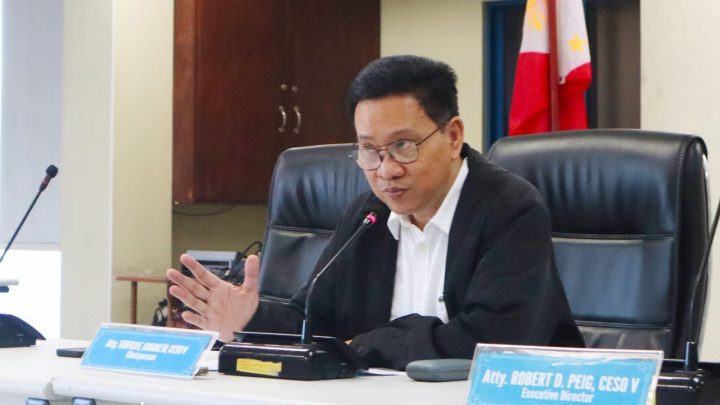
The PUVMP has long been a hot issue both from the public transportation sector and for the government, specifically for the Land Transportation Franchising and Regulatory Board or the LTFRB. The Consolidation for PUVs had a deadline set: December 31, 2023. Four days into 2024, that deadline has since elapsed, so what happens to those who did not consolidate themselves into Cooperatives per the coverage of the Public Utility Vehicle Modernization Program?
What’s next for the PUVMP after the Consolidation deadline has elapsed?
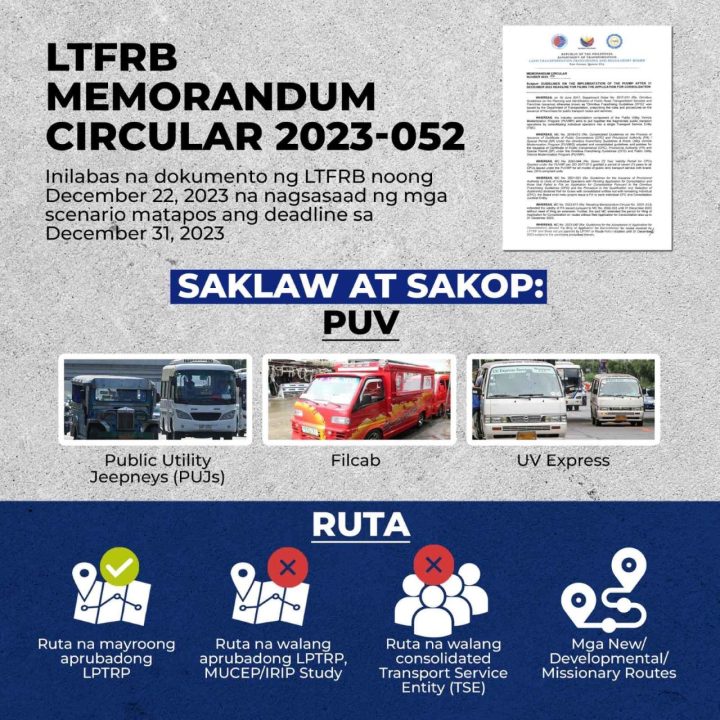
Photo: Land Transportation Franchising and Regulatory Board
First, to put things into perspective, the LTFRB released Memorandum Circular (MC) No. 2023-052 dated December 22, 2023. In a nutshell, the MC cleared the PUVMP implementation guidelines after the December 31 deadline. There are two main areas in its scope and coverage: the public utility vehicles (PUVs) and their routes.
For the former, the types of PUVs that are covered are Public Utility Jeepneys (PUJ), Filcab, and UV Express. The latter is governed by what is colloquially known as “prangkisa” or “franchise”. So, again, PUJs, Filcab, and UV Express are those who are mainly involved (nee affected) by the Modernization Program’s impending implementation.
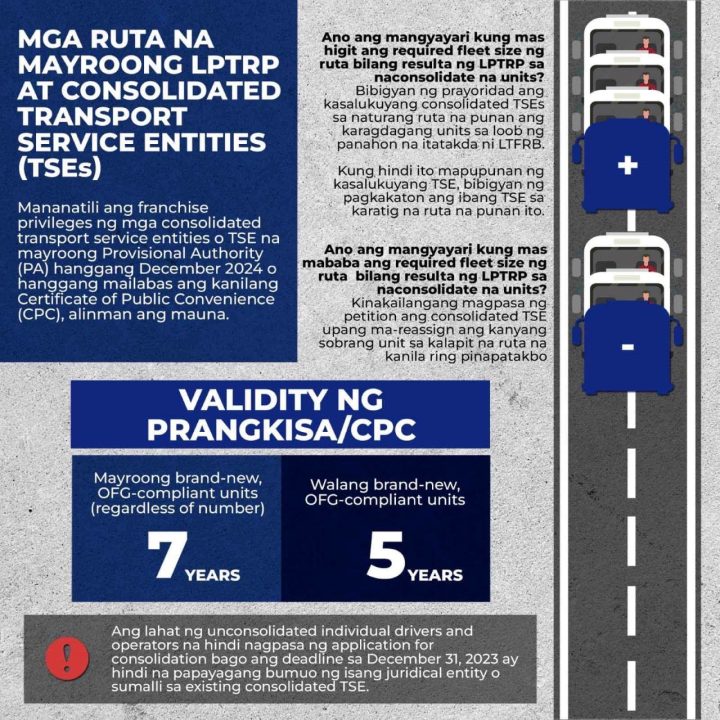
Photo: Land Transportation Franchising and Regulatory Board
Let’s look at how the PUVMP will address routes and the distribution and assigning (and granting) of franchises. This is, after all, the main thrust of the Program, in that only those whose PUVs have become part of consolidated Cooperatives will be given franchises (or more formally ‘CPC’ or Certificate of Public Convenience).
PUV routes that currently have an existing Local Public Transport Route Plan or LPTRP – a plan that details the route network, mode, and required number of units per type – will be retained by consolidated PUVs or transport service entities (TSE), provided that they have a Provisional Authority or a CPC, whichever comes (out) first.
In line with the LPTRP, priority for routes will be given to currently-consolidated TSEs. If the fleet size of consolidated TSEs does not meet the LPTRP requirement for franchises, those who have CPCs for other routes will be allowed to fill this gap. Of course, the TSE granted the CPC for a route will also have the chance to increase their units to meet the demand.
On the other hand, if the fleet size is too large, the TSE Operator will be asked to file a petition to re-assign its excess units to the nearest adjacent route covered under the Consolidated Operator’s area of operation or retained rationalized routes without consolidated entities according to the PUVMP implementation guidelines.
For the implementation of the PUVMP, the validity of the franchises will be 7 years for those with brand new, Omnibus Franchising Guidelines (OFG)-compliant units (regardless of how many units are in the fleet) and 5 years for those without brand new, non-OFG-compliant units.
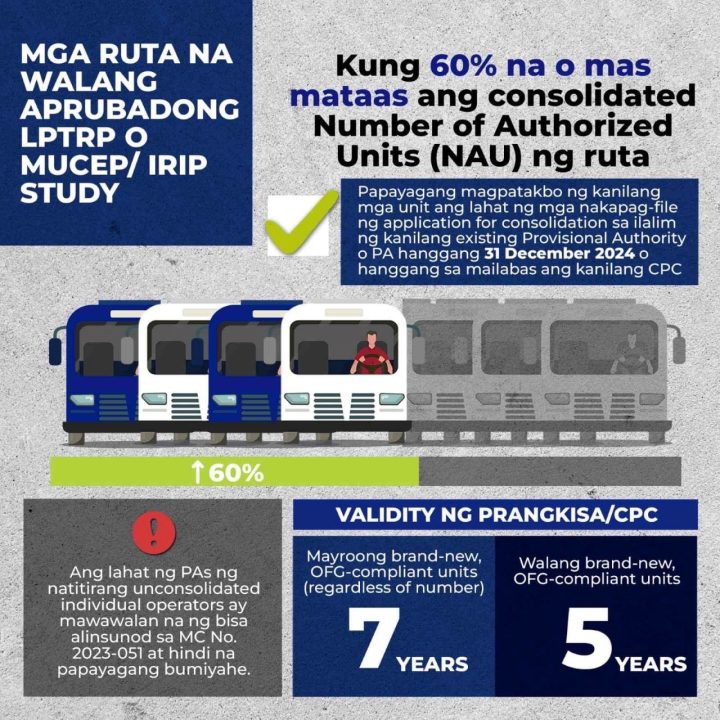
Photo: Land Transportation Franchising and Regulatory Board

Photo: Land Transportation Franchising and Regulatory Board
How will the PUVMP guidelines address existing routes with no approved LPTRP? If the number of consolidated Number of Authorized Units (NAU) is above 60% of the LPTRP requirement, then the consolidated TSEs can continue to operate until December 31, 2024, or until their CPCs have been issued, whichever comes first.
In case the NAU falls below 60%, the same rules above will apply and still allow the consolidated NAUs to operate. To address the shortage, unconsolidated individual operators may then be allowed to supplement the number of public utility vehicles on the said route.

Photo: Land Transportation Franchising and Regulatory Board
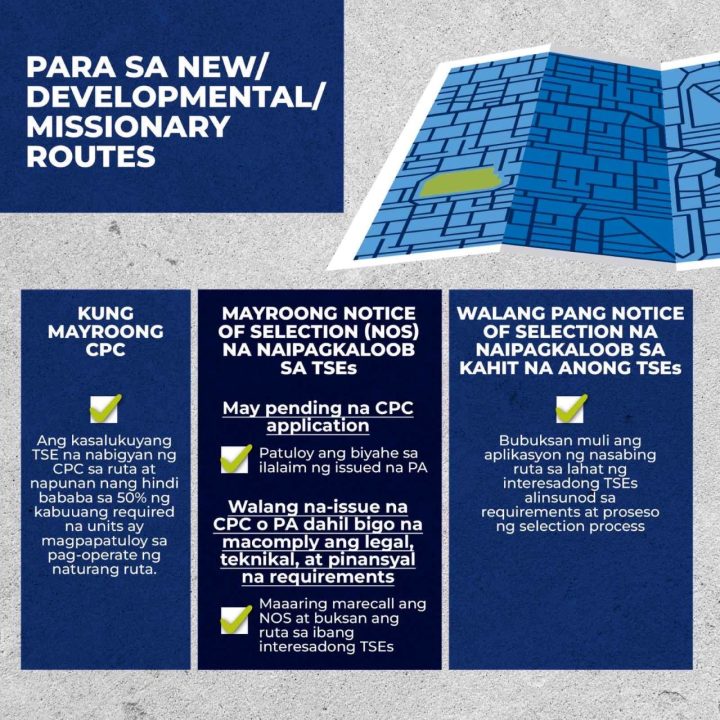
Photo: Land Transportation Franchising and Regulatory Board
Now comes the most important part of the PUVMP. What of routes that have no consolidated TSEs? That is, PUVs that did not meet the PUVMP Consolidation deadline but have existing franchises to various routes?
These individual operators or drivers who were not able to file for Consolidation are given only until January 31, 2024, to operate. At this time, a Show Cause Order will be issued to them by the LTFRB. The LTFRB will then execute a Selection Process wherein they will choose which operators will be authorized to use these routes that have no consolidated TSEs. It will likewise issue Special Permits to other Consolidated TSEs to be able to ply these routes.
-Perhaps the biggest, burning question about the PUVMP is “Will there be a jeepney phase out”? Has the “Hari Ng Kalsada” reached the end of the line and have their days on the road ended? Strictly speaking, and only in line with the provisions and guidelines outlined in Memorandum Circular No. 2023-052, there is no mention of such.
The only focus – it seems – is the fact that only those who are not part of Consolidation or Cooperatives are “targeted” by the guidelines. Perhaps, then, the phase-out is not yet happening, but this is something that may very well be inevitable.
But that will be a point for discussion next time.




